The governments of India and the United States have worked hard since the 1990s to smooth over challenges and advance ties. However, lingering Cold-War era suspicions and networks allow considerable space for harmful lobbies and ideologues to widen rifts.
The story of the conspiracy to kill Gurupatwant Singh Pannun on US soil may well be an instance of such dynamics playing out. The United States Commission on International Religious Freedom’s (USCIRF) Annual Report 2025, released this week, calls for targeted sanctions against India’s external intelligence arm, the Research & Analysis Wing (RAW). This is based, in large part, on the ‘Pannun Plot.’
These recommendations are non-binding and unlikely to be acted upon. But the threat to Indo-US ties from such narratives must be taken seriously. Given that the accusations are unconvincing, a possible ‘narrative-offensive’ by vested interests must also be ruled out in the interest of bilateral ties.
The ‘Pannun Plot’ plays out in three strands: the US Justice Department’s indictments; media coverage (especially Western); and official statements. The alleged story goes like this: Vikas Yadav, a RAW officer–presumably working on the Indian government’s orders–recruited Nikhil Gupta, an alleged narcotics and gun runner, to arrange the murder of Pannun, a US citizen, attorney, ‘political activist’, and Khalistani separatist.
The indictment (unsealed in November 2023) and the superseding indictment (unsealed in October 2024) are foundational texts upon which this narrative is built. Given the tone of certainty taken by the media and Western officials, the indictments were thought to stand firmly on their own feet. However, the mere application of a thriller-writer’s tools–causality, consistency, and believability–to the texts has them teeter, flail, and collapse.
They needn’t be made up, they just have to be ‘structured’. Screenwriting expert Robert McKee defines story structure or ‘plot’ as: “[…] a selection of events from the characters’ life stories that is composed into a strategic sequence to arouse specific emotions and to express a specific view of life.” So strategic selection, omission, sequencing of, and emphasis on events evokes emotional effects and value judgements.
This, in fact, is how it plays out: the indictments select and emphasise certain events; Western media explains away contradictions and makes insinuations the indictments cannot; and officials’ statements frame the events in moral terms and justify punitive actions. Through this process, a set of events are transformed into a morality tale about an authoritarian government targeting a ‘political activist’ for murder merely for expressing dissenting views. It’s a case study in collaborative narrative building.
The Indian government’s response, or counternarrative, has been that the US government gave it ‘inputs’ (rather than make allegations) of concern to India’s own national security as well, and that a subsequent probe committee recommended legal action against ‘an individual’ whose criminal links came to light during the investigation–in other words, it was the work of a ‘rogue’ officer. This piece studies the superseding indictment (the narrative of events in both indictments is identical), some embellishments supplied by Western media ‘reporting’, and statements accompanying the unsealing of indictments and finds the Indian narrative more credible.
Let us examine the principal claims this narrative is built upon by turn.
Claim: Yadav worked for RAW
The indictments don’t make this explicit claim, but The Washington Post (WP) and most of Western media do. Subsequent revelations show that Yadav actually belonged to RAW’s sister arm, the Aviation Research Centre (ARC), which deals with image intelligence. He wasn’t absorbed as a ‘permanent employee’ almost a decade after joining the organisation, which includes the time of the ‘Pannun Plot’.
Frustrated, Yadav had sought reversion to his parent cadre, the Central Reserve Police Force (CRPF), in 2020 and had even taken ARC to the quasi-judicial Central Administrative Tribunal (CAT). Interestingly, WP mentions Yadav’s CRPF past to explain his lack of ‘[intelligence tradecraft] training and skills’ but not that he belonged to the ARC. Surely their super-credible sources – ‘current and former Western security officials’ and ‘former senior Indian security officials who had knowledge of the operation – must have mentioned that Yadav could mean ‘photograph’ when he said ‘shoot’!
They didn’t even mention it while telling WP that ‘the decision to entrust Yadav with the high-risk mission sparked recriminations within the agency’ after the plot failed? WP goes further to say US intelligence assesses that the then RAW chief, Samanth Goel, ‘approved’ the operation and insinuates that ‘[a]mong those suspected of involvement or awareness’ is National Security Advisor Ajit Doval. That is, these top Indian intelligence officials approved of sending an image-intelligence officer with inadequate training and skills up against the Federal Bureau of Investigation (FBI) counterintelligence to plot the assassination of a high-profile anti-India activist in America—a friendly country, a key economic and strategic partner, and the world’s lone superpower.
Spies’ employment histories are often faked, one might say. Even so, there has to be more than a mere connection to RAW to conclude that Yadav’s actions were at RAW’s behest. It’s telling that the indictment stops short of calling Yadav a RAW officer and the ARC doesn’t come up once in the many leaks fed to WP.
Claim: Yadav’s Tradecraft Was ‘Sloppy’
Yadav’s tradecraft isn’t sloppy as much as absent. This is an important fact, one that can’t be brushed aside as easily as WP does. Consider just some of Yadav’s errors.
He opens with a mistake when he sends Nikhil Gupta a text that reads, ‘This is Vikas… Save my name as Aman.’ No knowledge of spy tradecraft is needed to recognise the blunder here, but it is also widely known that intelligence handlers don’t share their real identities with assets. Further, Yadav seems to rely entirely on text messages to communicate with Gupta; the messages are often direct–no code words, for instance–using words like ‘targets’ and so on. Also, Gupta shares screenshots of his other conversations with him, to which Yadav responds. In one instance, Yadav responds to Gupta’s screenshots about payment for the hit, saying, ‘We are ready to pay $150000… The offer will go higher depending on the quality of the work…’ This is one of many instances where Yadav goes out of the way to create self-contained text conversations. A prosecutor or a hostile intelligence agency couldn’t have done a better job.
Yadav is also a flip-flopper. He initially says paying an advance isn’t possible and then, inexplicably, scrambles to arrange a payment in Manhattan. Gupta then forwards him screenshots of people acknowledging receipt of the advance, and Yadav responds: ‘Ok bhai ji.’ It’s pleasantly bureaucratic–payment’s made, here are the receipts for your files–but it makes no sense in a top-secret operation.
The most bizarre thing Yadav does, however, is to forward a video clip of Hardeep Singh Nijjar’s body–Canadian citizen and designated terrorist in India–slumped in his (Nijjar’s) vehicle just hours after the killing. Western media treats this as smoking-gun proof. The specific problems with this interpretation are discussed later but why would an intelligence agent–alleged to be supervised at the highest levels in this mission–forward such incriminating material to an intermediary? Especially when he hasn’t taken adequate care to conceal his identity?
An hour later Yadav resends Pannun’s address to Gupta. A day or two later, he forwards a news article about Pannun and the message ‘[i]t’s [a] priority now’. Once again, Yadav goes out of the way to provide context.
Later, he even offers ‘to help your team if they are sending location’ and shows off his knowledge of Pannun’s movements, telling Gupta that Pannun isn’t home and that he [Yadav] ‘got the message from the boss’.
Yadav, we’re told, reported being trained in ‘[c]ounter [i]ntelligence’, but he didn’t realise his device and account on the ‘encrypted messaging application’ would be accessible to US authorities during the investigation if not the plotting? None of his communications show signs of an operating protocol or discipline. To make the argument that this was cleared and supervised by the RAW chief borders on the absurd.
Yadav’s performance as handler is even worse. The story the indictment tells is that Yadav cajoled Gupta into advancing the plot by sorting out a criminal case Gupta was caught up in. This itself is surprising as Yadav, a government agent, could have wielded the threat of prosecution for non-compliance.
Yadav’s coaxing done, we’re told that Gupta broached the subject with someone he believed was a criminal associate but turned out to be ‘a confidential source working with US law enforcement (the “CS”)’. In turn, CS brought an undercover US law enforcement officer (the “UC”)pretending to be a hitman into the loop. Here on, as handler of an incredibly sensitive mission, Yadav is supremely indifferent to what Gupta discloses to CS and UC.
Gupta offers CS and UC advice on how to carry out the hit, confirms his location in India, gets on audio and video calls with them, and even forwards the video clip of Nijjar’s dead body (received from Yadav) to them. Gupta also discusses the Indian Prime Minister’s state visit to the US and asks that the murder not happen on those dates. Think of it: an Indian intelligence asset revealing this to two random underworld figures when there was absolutely no need for them to know. An intelligence operative would probably realise that they’re handing the gangsters a plea-bargain chip certain to be cashed one day.
Yadav also allows Gupta to establish direct contact with UC–a connection CS makes ‘electronically’, like a WhatsApp introduction–increasing Gupta’s, and thereby Yadav’s, direct exposure to the plot. Gupta then plays the salesman with both UC and CS, constantly dangling future hit jobs in front of them, including a ‘big target’ in Canada. As will be discussed later, these interactions, including those with Yadav, come off as chats with fellow gangsters, but for now it will suffice to underscore that there was no communication protocol or information control.
As the weeks go by and UC doesn’t deliver on the hit, Yadav and Gupta are reduced to helplessly badgering CS and UC with texts. A supervised agent would probably have guessed something was off when the hitman had gone weeks without carrying out the job and offered no explanation! Ultimately, UC sends ‘a series of photographs of the vicinity of the Victim’s residence and neighborhood.’ Yadav responds: ‘Excellent…[t]hey are proving that they are quite serious now.’ Such excitement over street pictures?
Finally, Yadav allows Gupta to travel abroad, which is in itself baffling. The Print writes: ‘Gupta was allowed to leave India for the Czech Republic, where he was arrested, two weeks after the murder plot failed to materialise. “A professional officer should never have allowed someone like Gupta to visit an area where he could be apprehended by Western law enforcement,” one officer said.’ Actually, according to WP, even the day before he travelled to Prague, Gupta was texting UC–whom he was supposedly travelling to the Czech Republic to meet–about Pannun’s whereabouts and an opportunity to kill him.
But more importantly, as the quote above plainly states, Yadav wasn’t being a ‘professional officer.’ Through the conspiracy, his interactions with Gupta lack purpose, authority, or control–in fact, he comes off as a fellow gang member or a modestly senior peer. He hovers about like a distant facilitator rather than a serious handler reporting to the top security bosses of his country.
Claim: Gupta was the Asset
That Gupta is actually a liability is an irresistible poor joke. His contacts, his handling of communications and people, and his very character appear entirely unsuitable for a high-stakes operation.
We’re told, by WP itself, that ‘he had never been used for jobs in the West.’ Perhaps RAW thought wrecking the mission an acceptable price for speeding up Gupta’s learning curve. So India’s master spies unleashed Gupta to ‘abruptly [ask CS] “about the possibility of hiring someone to murder a lawyer living in New York.”’ That was the diabolical masterplan: have a ‘guy who might or might not know a guy’ ask ‘another guy who might or might not know a guy’ to bump off a politically-connected high-value target in America.
Gupta’s cluelessness is apparent all through. Initially he even seems unaware of Pannun’s background and activities, so he suggests to CS that he can be lured to a convenient location on the promise of new business. He also feels compelled–as does Yadav–to feed CS and UC information about Pannun.
In all his interactions with CS and UC, he seems eager to please, almost requesting action rather than expecting fulfilment of a commitment. He’s desperate to keep them interested by promising new jobs – ‘after that they have more jobs, more jobs – and telling CS that killing Pannun ‘would change the UC’s life because “we will give more bigger job more, more job every month, every month 2-3 job.’ At one point he tells CS he would ‘bring the chief’ to meet him after the job is done; at another, he reassures CS that “we are doing their job brother. We are doing their New York [and] Canada [job]”; at still another point, he calls UC (the hitman) from a conference room, turns the phone towards the others in the room, and tells him, ‘We’re all counting on you’. [Incidentally, he uses ‘we’ to identify with UC and CS and separately with Yadav as well.] The narrative is that UC is an unknown hitman Gupta hired on behalf of Indian intelligence, so why is he appealing to the assassin’s finer senses? His interactions sound oddly personal, like an employee of a multinational company dealing with colleagues in another country.
His communications with UC and CS are, as mentioned, entirely unprofessional for an intelligence operation. He discusses the Indian PM’s visit as a factor in the timing of the murder, he talks about hit-jobs in Canada, and he also answers a video call with UC and a presumably unknown individual paying him (UC) an advance for the murder. The promptness with which he forwards the video clip of the dead Nijjar to CS and UC is reminiscent of a kid showing off to friends. And when Nijjar’s killing surprises Gupta after he’s promised UC the job, Gupta calls to console UC and perhaps save face: ‘“[Nijjar] was also the target” but he was “#4, #3” on the list, and not to worry [because] we have so many targets, we have so many targets.’ This, we’re told, is the tip of Indian-intelligence’s spear.
WP also tells us that ‘US agents used their DEA informant to persuade Gupta to travel to the Czech Republic for what he was led to believe would be a clandestine meeting with his American contact, according to officials familiar with the operation.’ That’s strange, because the indictment tells us Gupta texted UC the following on June 29: ‘“[w]e have the Intel that the [Victim]…has arrived back to his home” and “[t]oday he should come out definitely.”’ So he was expecting UC to do the job done in the US on the 29th and on the 30th took off to meet him in Prague? Or was he expecting to meet some other ‘American contact’ of CS’s even though they hadn’t delivered on this job? Even stranger is the fact that the indictment makes no mention of Gupta discussing such a trip with Yadav. This ambiguity might prove or disprove nothing, but it certainly demonstrates that the story is full of ambiguities even if it’s presented in the media as being straightforward.
Claim: Not a Gangland Plot
Western narratives insist this was a RAW plot. But, so far, we’ve seen that the absence of tradecraft admits of the possibility that this activity was criminal and not intelligence-related. Then the tone and casual manner of text exchanges–sharing screenshots, clips, and so on–reinforce the impression that nothing here is formal or protocol driven. These are all significant problems with the story we’re being sold. But as we can’t overstipulate how handlers, assets, and criminal associates might interact, we may flag these issues and move on to other signs of gang-like behaviour.
Yadav identifying himself to Gupta itself is a major deviation from the norm, so the nature of his association with Gupta must be questioned from the very start. Gupta also believes Yadav has an ‘NY dealer’, who can arrange the advance payment to UC (the hitman). More strangely, before he mentions Yadav’s dealer, ‘Gupta messaged Yadav that Gupta’s associate did not have the funds available in New York to make the advance payment, and asked that Yadav check with his contact.’ Whyever is Gupta advancing money for an Indian government hit?
Similarly, the casual manner in which CS connects Gupta to UC ‘electronically’ and UC also accepts is another hint of gangland familiarity. Gupta, who should have been concerned about losing CS as a buffer, is actually eager to make contact. Even Gupta receiving a video call from UC when the advance is paid and confirming that he’s located in India only amplifies the impression of familiarity–why else would a plotter risk getting facially identified, even photographed? The sense of camaraderie Gupta expects is most on display when he calls UC and turns the camera on his ‘business-attire’ clad associates and says ‘we’re all counting on you’. What part of this sounds like intelligence work? And on a side note, nobody wears ‘business attire’ in Delhi’s blazing June heat.
Forwarding a video clip of Nijjar’s dead body to CS and UC just hours after he’s been killed is another telling sign of familiarity. More on the video clip later, but let us pause to take this in: Gupta’s sending potentially incriminating evidence to two criminals, one of whom he’s recently come into contact with? And even if we fully discount Gupta’s ‘bhai’ and ‘brother’ lingo, we can’t ignore his desperate need to impress CS and UC with constant salesman-like pitches of future jobs and potential money to be made. It makes sense when people belong–if loosely–to the same network, but not if these are purely transactional relationships.
Another example of Gupta’s gangland behavior–perhaps the clearest–is when he receives the video clip of Nijjar dead in his car: ‘Gupta replied that he wished he had personally conducted the killing and asked for YADAV’s permission to “go to the field.”’ Isn’t he supposed to be a dealer-cum-fixer, not a gun-toting gangster?
A baffling subplot emerges here: how did Yadav get the video clip? The indictment says the video clip showed ‘Nijjar’s bloody body slumped in his (Nijjar’s) vehicle’–not footage of him being shot, slumping, or moving. But the Globe and Mail’s version of events has Nijjar’s associates including one ‘Mr Fauji’ nearby and giving chase to the gunmen up to their getaway car. The gunmen, then, are unlikely to have had the time to wait and video Nijjar’s body after the smoke cleared and Nijjar stopped moving. If that’s accurate, then the clip was most likely taken by Nijjar’s associates. How did Yadav come into its possession? This needs to be seriously examined.
Returning to the indictment itself, there are ample signs in it that Gupta’s relationships with CS, UC, and even Yadav are gang-like. But what speaks loudest in the indictment, in Western media coverage, and in official statements is complete silence on the fact that Pannun’s clients like Nijjar are known to have links with the underworld, and that Gupta isn’t the only one with links to narcotics and gun-running: the entire Khalistan movement has long been linked to it. The silence over the high probability that gangland animosities might be behind the targeting of the likes of Nijjar and their allies, like Pannun, is deafening.
Claim: RAW’s is Tradecraft is Sloppy
WP’s own reporting about RAW’s alleged activities in Pakistan says the following: ‘To aid deniability, RAW officers employed businessmen in Dubai, a regional commercial hub, as intermediaries and deployed separate, siloed teams to surveil targets, execute killings and funnel payments from dozens of informal, unregulated banking networks known as hawalas set up in multiple continents, according to Pakistani investigators.’ Compare this with the erratic, half-baked efforts of Yadav and Gupta, with an influential target in a far more consequential country.
WP also reports how a supposed RAW handler calling herself ‘Tanaz Ansari’ recruited assets years before utilizing them; meticulously managed different teams for surveillance, the hit, weapons disposal, and payments; and worked painstakingly to make sure only the intended target was killed. Pakistani investigators have not been able to establish Ansari’s real identity till date.
Despite WP’s weak attempts to equate Ansari’s successful operations with this clown-show, the truth is–and if Ansari was indeed a RAW operative–that Yadav’s efforts were just a cheap imitation. And in most instances where RAW’s involvement has been alleged–as in Canada, Pakistan, and now the United States–no definitive proof has ever been recovered. If RAW were indeed incompetent and used ‘sloppy tradecraft’, the West would have no trouble detecting and suppressing it. The problem, if any, is that RAW’s professional capabilities are formidable, though never acknowledged or advertised.
Another one of WP’s inadvertent slip-ups gives away the brittle foundations of this entire narrative: ‘It wasn’t until Gupta’s arrest that U.S. officials obtained evidence that an officer in India’s spy service was behind the conspiracy, officials said. Devices seized from Gupta provided a trove of new intelligence, including his extensive communications with Yadav, officials said.’ No other signs, no counterintelligence pick-ups–nothing.
So why try to paint RAW as incompetent and the foiling of the Pannun ‘plot’ a disaster so big that RAW chief Samant Goel was denied an extension? That could be a discussion in itself, but I would speculate that Goel’s extension not coming through, if not routine, was due to RAW’s failure to detect Yadav’s underworld links and to anticipate the coming ‘narrative offensive.’
Claim: Plotters Didn’t Want Murder to Occur During PM’s Visit
The indictment tells us Yadav instructed Gupta that Pannun was not to be assassinated ‘in the immediate lead-up to, or during, the Indian Prime Minister’s visit to the United States.’ Gupta explains to CS that ‘given the Victim’s public profile as an activist, there could be protests in the wake of his death, which could lead to “political things,” referring to the geopolitical fallout […]’
Makes sense: the murder’s on hold until the PM’s visit is done. But then, why does Yadav push Gupta on June 2, 2023, saying, ‘It’s important and less time’? Public memory may be short but can you murder Pannun in the first week of June and hope there will be no protests or diplomatic fallout by the time PM Modi arrives on June 20? Then Yadav and Gupta scramble to make an advance payment between June 5 and 9. On the morning of June 9, Yadav texts Gupta: ‘Let’s activate the team and get it done this weekend.’ Wasn’t there ‘less time’ even on 2nd June? The payment is made in a hurry, on the 9th itself.
Days earlier, on June 6, Gupta told CS, ‘So at least we need to calm down everything for 10 days…’ After the call, he must have gotten back to frantically arranging the advance. On June 11, Gupta forwards surveillance pictures of Pannun, and Yadav replies, ‘It looks promising…but we have today only…if it doesn’t happen today it will be done after 24th.’ That makes sense too: it’ll be ancient history by the time the PM arrives eight days later.
Meanwhile, Gupta’s ‘we’re all counting on you’ video-call to UC happens on June 12, and on June 14 Yadav wants UC to ‘follow [the Victim] till the time he enters his house or some other final place.’ Once again, aren’t things supposed to be on hold?
On June 18, the day before PM Modi arrives in the US, Nijjar is killed in Canada. If RAW is orchestrating these killings and wants to avoid the PM’s visits, why is Nijjar killed when the PM is on a state visit to Canada’s neighbour, ally, and Five Eyes partner? This occurrence itself is hugely damaging to the ‘avoid PM’s visit’ strand of the narrative, but what comes next makes one’s jaw drop.
On June 19, Gupta tells CS that “we got the go-ahead to go anytime, even today, even tomorrow–as early as possible. [The UC] has to finish this job brother.”’ The indictment makes no mention of Yadav reversing instructions, no rationale, nothing–just a total u-turn. And while the indictment tries to underplay it, the ‘don’t assassinate during the PM’s visit’ story just went up in flames.
On the same call with CS, Gupta says: ‘If he is not alone, [if] there are two guys with him in the meeting or something…put everyone down, put everyone down.’ So now a mass shooting killing a high-profile, politically-connected dissident in New York during the PM’s visit is considered good optics? Compare this with what happened just hours before a supposedly RAW-engineered execution of a terrorist in Pakistan: ‘But she [Ansari] demanded that Afridi send photos confirming Raza’s identity, saying she otherwise lacked “permission” from higher-ups to green light the operation and pay him.’ The stakes in killing Pannun weren’t lower, were they?
On June 20, the Day PM Modi’s state visit commences, Yadav sends Gupta a news article about Pannun and says ‘[i]t’s [a] priority now’. On 22nd June, Yadav greenlights the killing again. Now, it seems, Yadav is in a hurry for the murder to happen before Modi leaves the US!
The indictment’s claim and news reports are based on two minor references to the PM’s visit by Yadav and Gupta. What they don’t factor in is the possibility it might be gangsters worrying that derailing the Indian PM’s state visit might bring the Indian’s government’s wrath upon it. And what they definitely won’t tell you is that after mentioning the state visit, Yadav and Gupta did everything in their power to speed up the murder. So much so that, ultimately, they were pushing hard for it to happen while the state visit was on!
Third Strand of the Narrative
At the time of unsealing the superseding indictment, Attorney General Merrik Garland said, ‘The Justice Department will be relentless in holding accountable any person — regardless of their position or proximity to power — who seeks to harm and silence American citizens.’ FBI Director Christopher Wray said, ‘The FBI will not tolerate acts of violence or other efforts to retaliate against those residing in the U.S. for exercising their constitutionally protected rights.’ Assistant Attorney General Matthew G Olsen of the Justice Department’s National Security Division was even more strident: ‘Today’s charges are a grave example of the increase in lethal plotting and other forms of violent transnational repression targeting diaspora communities in the United States. To the governments around the world who may be considering such criminal activity and to the communities they would target, let there be no doubt that the Department of Justice is committed to disrupting and exposing these plots and to holding the wrongful actors accountable no matter who they are or where they reside.’ A letter sent by six US senators, including Bernie Sanders, addressed to Secretary of State Anthony Blinken read: ‘The United States must be firm and resolute in opposing transnational repression, no matter the perpetrator.’ The USCIRF report has already been mentioned.
The new buzzword ‘transnational repression’ freely used here places India in a category along with China, Russia, and North Korea, and a few others. The narrative, thus far built up through the indictments and media coverage (including statements and stories of Khalistani extremists), now gets the official treatment: framed as a moral issue to justify or threaten punitive action.
With this in the system, the USCIRF report and the proposed bill to ‘establish a reporting requirement for cases of transnational repression’ reference it. And the conclusion is that protecting Pannun is effectively the same as protecting American freedoms.
The defense of such freedoms is without doubt non-negotiable, but such accusations, if not based on solid evidence, risk appearing to be cynical political or geopolitical tactics. Unfortunately, that interpretation has taken hold in sections of the Indian middle-class. It’s important for both countries now to clear the air, and to rule out the possibility of interference by ideologues and mischievous lobbies.
While this analysis may not have disproved anything, it certainly raises serious questions about claims made in these foundational text(s). So the narrative pushed using them as the basis is far from proven; rather, the superseding indictment might well be a powerful exhibit in India’s defense of its counternarrative!
Indirect developments support this view: a Canadian commission slipped up and mentioned that ‘no definitive connection’ linking India to Nijjar’s killing was found; US law enforcement has expressed satisfaction with India’s cooperation on investigating the plot; the high-level committee set up by the Indian government has recommended action against an ‘individual’; and WP complained in one of its stories that ‘White House officials warned the Modi government this month that The Post was close to publishing an investigation that would reveal new details about the case. It did so without notifying The Post.’
Perhaps the White House assessed that the grounds were flimsy and India was cooperating. WP itself reports that ‘Indian officials gave no indication that their investigation would implicate senior officials in Modi’s government […] and pressed their US visitors to supply more information supporting their allegations.’ The Biden administration must have also known that it was never worth India’s while to elevate a petty nuisance like Pannun to the level of Jamal Kashoggi (with due apologies to the memory of Kashoggi).
Consider also that a logical case for India misapplying its diplomatic and security resources on killing someone like Pannun can’t be made out. First, America’s importance to India as an economic, technological, and strategic partner is massive. Two, India’s ruling Bharatiya Janata Party (BJP) and the then ruling Democrat dispensation were ideologically apart, leaving little room for brash steps. Three, India was under some pressure from Europe and, less so, the U.S.A. for purchase of Russian oil after the Ukraine war broke out. And fourth, the situation in Punjab itself was stable despite increased interference from overseas activists, and Khalistani terrorism was an electoral non-issue in the 2024 elections.
That explains why the governments themselves have been restrained in their language and handling of the issue. Beyond bowing to domestic pressures occasionally, neither wants damage to bilateral ties.
The So-Called ‘Victim’
The target of an assassination or an extrajudicial killing is, without doubt, a victim. The use of the term in an indictment is entirely appropriate. However, the conspiracy of silence that surrounds Pannun in the Western media and amongst elected and law enforcement officials is another matter.
Pannun hasn’t been charged with any crime by the US authorities, but he’s been designated a terrorist in India and is wanted in several cases. Western governments and media are dismissive about evidence Indian governments have shared with the West regarding Pannun himself, the organisation he founded, ‘Sikhs for Justice’ (SJF), and several other Khalistan activists. However, a comprehensive Hudson Institute report in 2021 states that ‘[t]he Indian government has provided the US government considerable evidence of links between US-based Khalistan groups and militants and terrorists operating in India.’ It also details the questionable activities of SJF and calls for detailed scrutiny by US authorities.
Clients of Pannun’s, like Nijjar, were known to have gangland connections and suspected terror connections–these suspicions put him (Nijjar) on a Canadian no-fly list. Pannun’s ‘Sikhs For Justice’ routinely tries to stall Indian extradition requests against wanted criminals and terrorists around the world. Pannun even traveled to Thailand to stall India’s extradition request against Jagtar Singh Tara, who was convicted for and is unrepentant about involvement in the killing of Beant Singh, the Chief Minister of Punjab. Pannun defended Tara on the grounds that those convicted were trying to put an end to ‘extrajudicial killings ordered by Beant Singh’–‘[t]his isn’t terrorism,’ he said. On social media he’s reported to have stated that the 2019 Pulwama attack, which killed 40 Indian security personnel, ‘cannot be termed as an act of terrorism.’ Pannun’s name has cropped up in a deadly gang rivalry when he was reportedly heard offering to shelter the killers of popular Indian rapper, Sidhu Moosewala. Why does Pannun come up in a rapper’s murder?
It’s not clear, but scholarly work on the Khalistan movement reveals worrying trends about this entire ecosystem. Shinder Purewal writes: ‘The criminal-Khalistani nexuses in the Punjab and Sikh Diaspora show that it has become a vast enterprise involving traditional activity of drug-weapon smuggling combined with ransom, kidnapping, extortion, human smuggling, money-laundering, contract killing, control of the music industry and professional sport. The enormous financial resources backed by gun-bomb terror and the willingness to use this deadly force have created a vast kingdom of narco-terrorism. The political campaign of referendum politics for Khalistan in the Sikh Diaspora is backed by this great terror network.’
Pannun is also accused of making what India’s External Affairs Minister, S Jaishankar calls ‘cleverly worded’ threats. These include threats to Air India; threats to the Indian parliament, leaders, diplomats, and others. Khalistani groups have attacked media persons in Canada and attacked Hindu temples both there and in the United States.
While Pannun doesn’t deserve to be targeted for assassination for these statements and while US officials must hold their noses and protect him, what explains the invocation of high principles in the defence of this movement and this person? And what explains the deafening silence of the ‘neutral and rational Western media’ on Pannun’s and the Khalistan movement’s violent ideology? Shinder Purewal writes that the Khalistan movement gives ‘some state actors’ an opportunity ‘to use the Sikh card to arm-twist India on its foreign policy of strategic autonomy’.
Indian ideologues seem keen to go along, forgetting that Pannun has targeted India’s only Sikh Prime Minister, Manmohan Singh, Punjab’s then Chief Minister, Amrindar Singh, Congress President Sonia Gandhi, and others with nuisance lawsuits. And the push to slot India as a ‘transnational repressor’ will not only harm Indian interests but will also weaken the crucial Indo-US partnership. The consequences for Indian citizens and the Indian diaspora are also a worry. The worst fallout, however, is upon moderate Sikhs who disapprove of extremism and also seek strong and positive ties with their country of origin, India.
Behind closed doors, even American security managers must surely worry about any emboldenment of Khalistani extremism. The Hudson Institute’s paper–amongst others–describes Pakistan’s influence over the Khalistan movement, including Pannun’s ‘Sikhs For Justice’. The paper predicted that Pakistan might use the Khalistan movement to ‘distract’ from US-India cooperation and to favour its ally, China.
The same report also details how the Khalistan movement has built up influence in US legislative organs like the Congress. That might explain why, just two days prior to PM Modi’s meeting with President Joe Biden in September 2024, White House and US intelligence officials met with ‘Sikh advocates to discuss threats facing Sikhs in the United States.’ The Pannun ‘Plot’ was discussed at that meeting, in another affirmation for this three-pronged narrative. It is now time to rethink and renegotiate this narrative in the interest of both countries and their people.
The writer is the published author of two novels (Penguin, India and Westland, India) based out of the San Francisco Bay Area. Views expressed in the above piece are personal and solely those of the writer. They do not necessarily reflect Firstpost’s views.


)
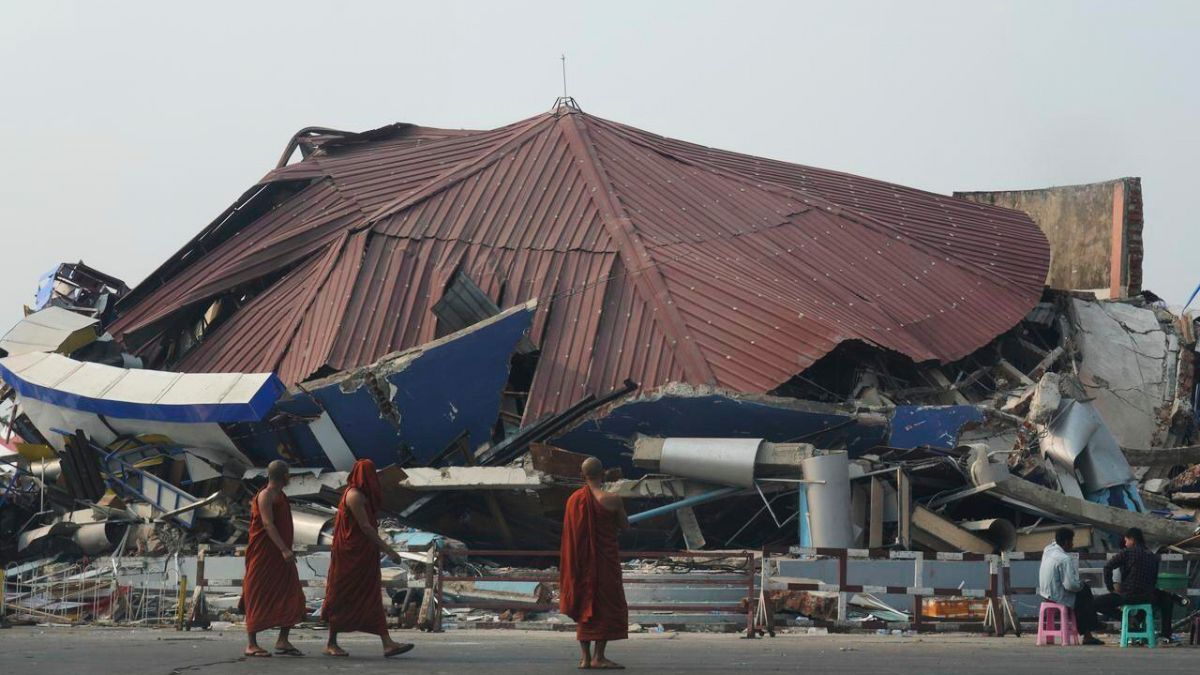)
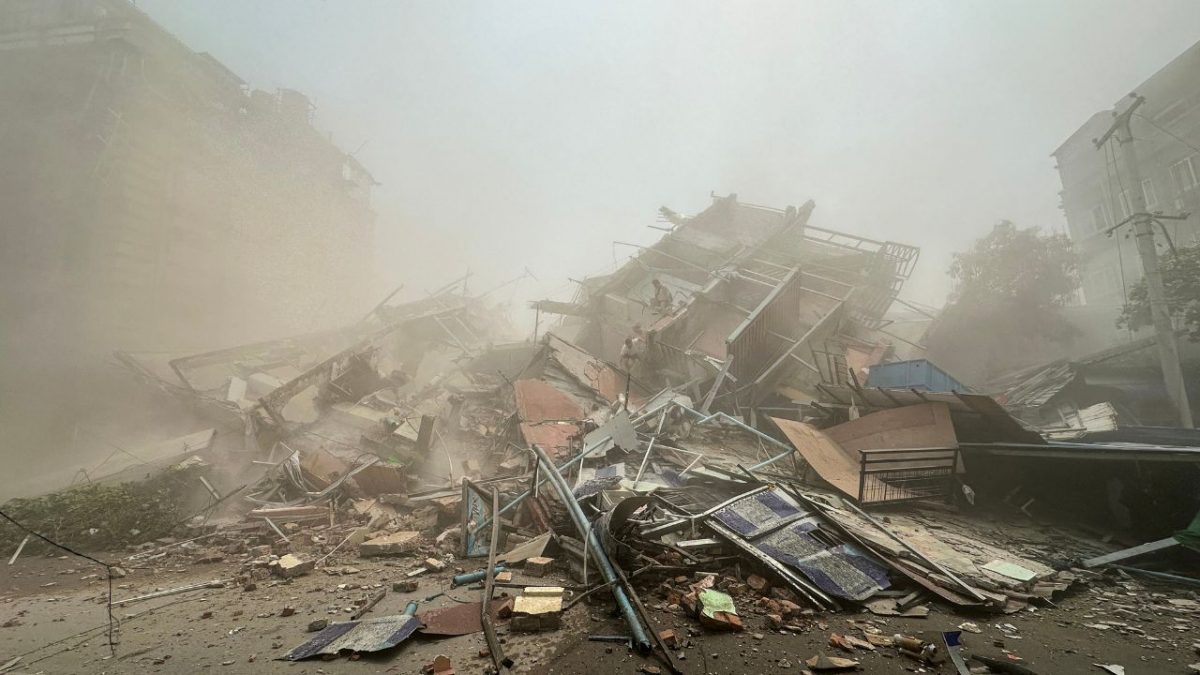)
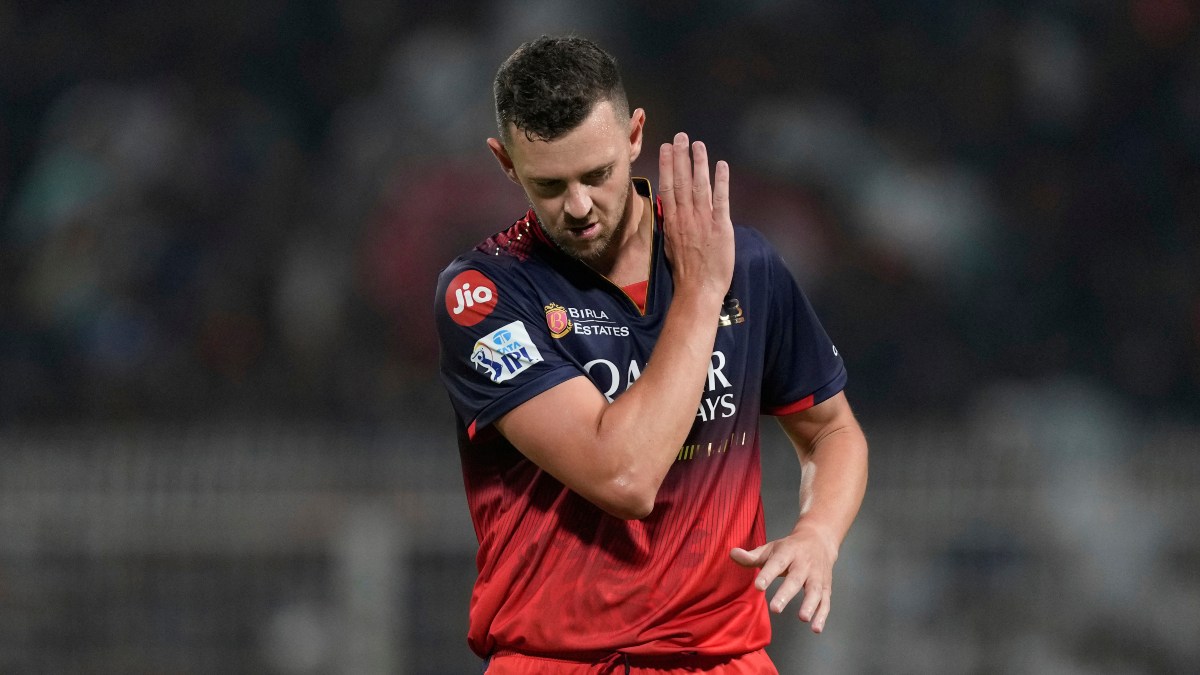)
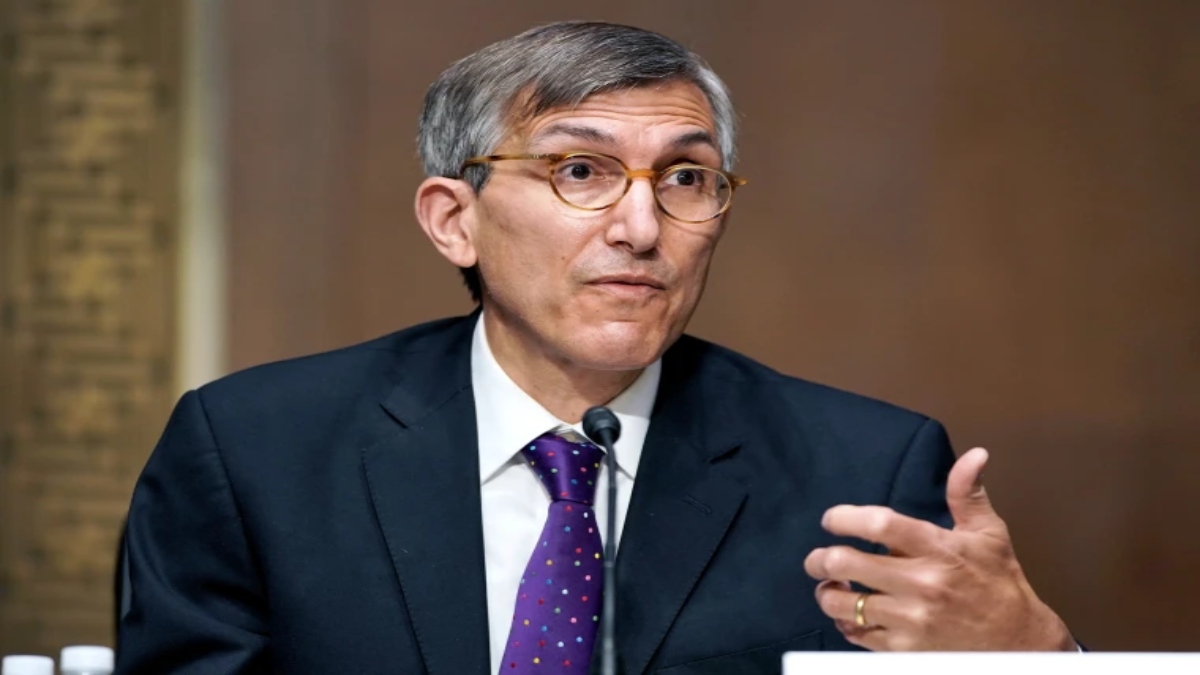)
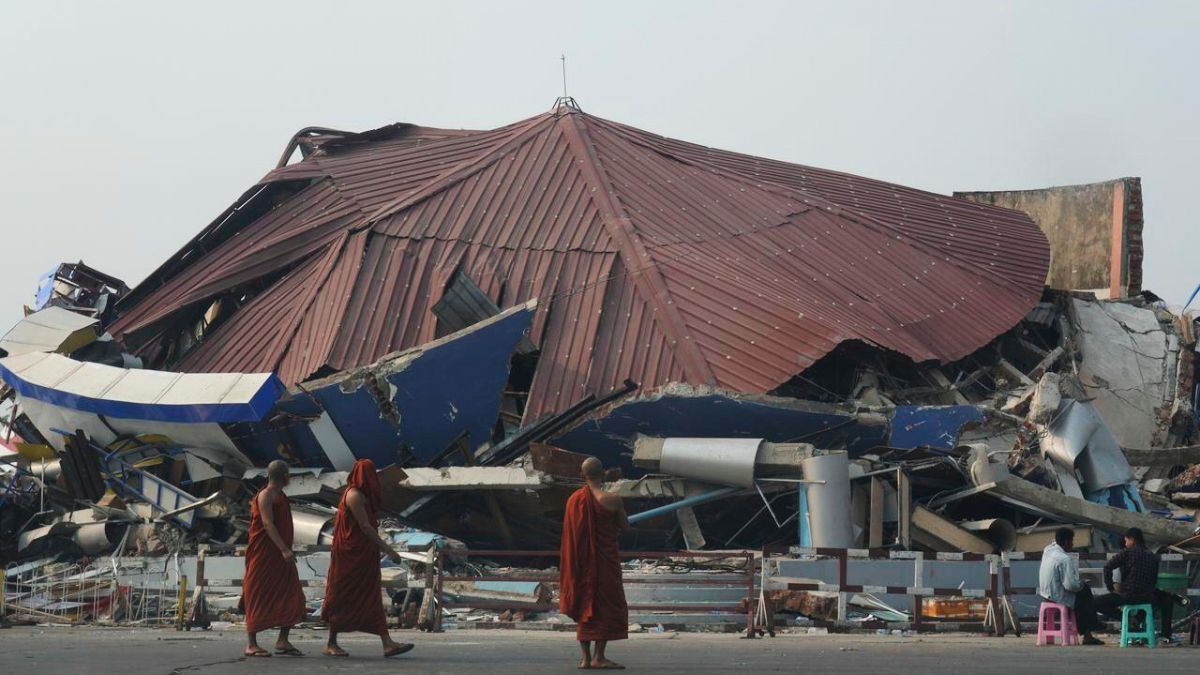)
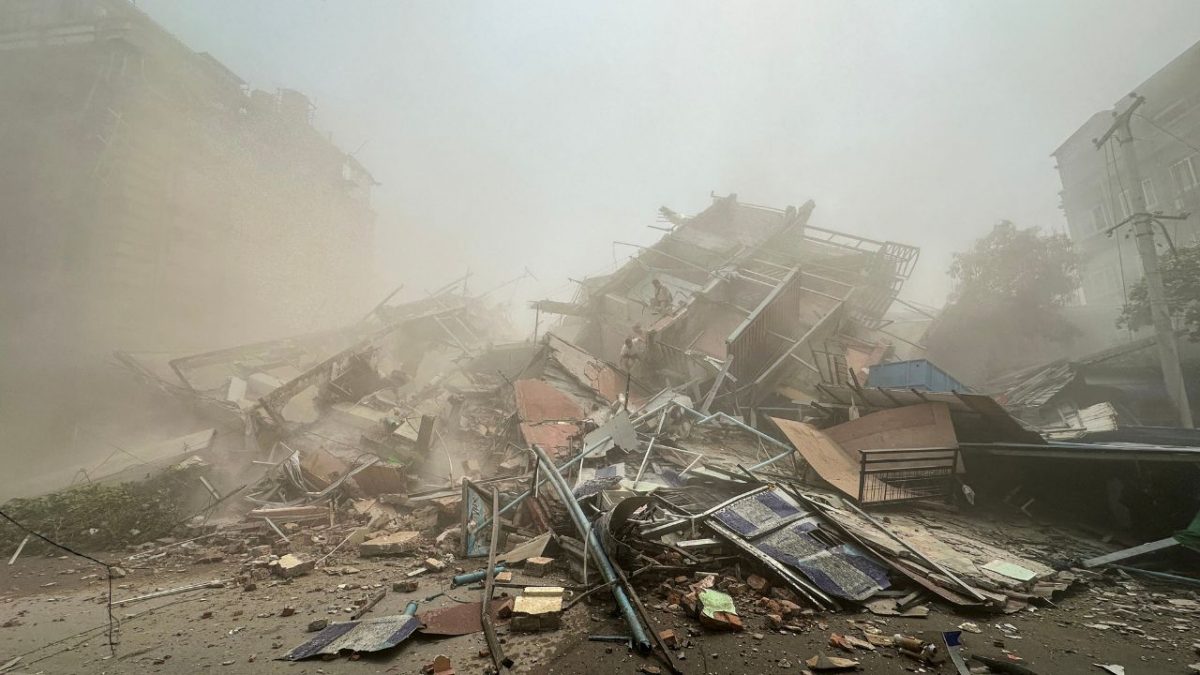)
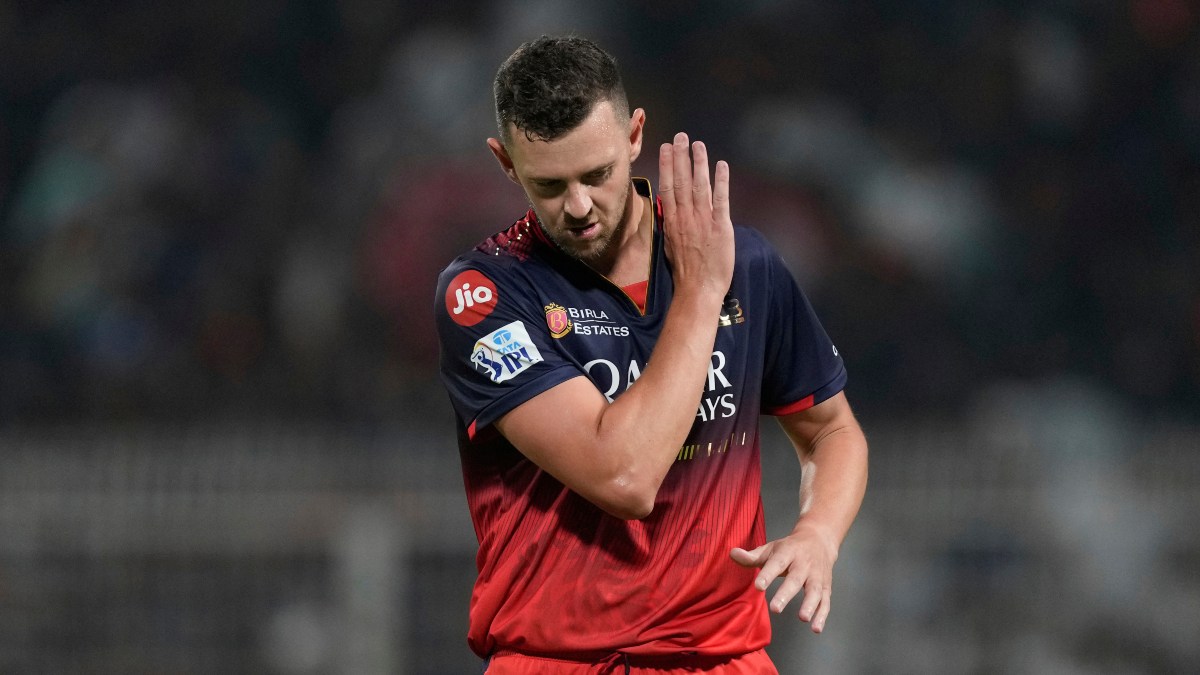)
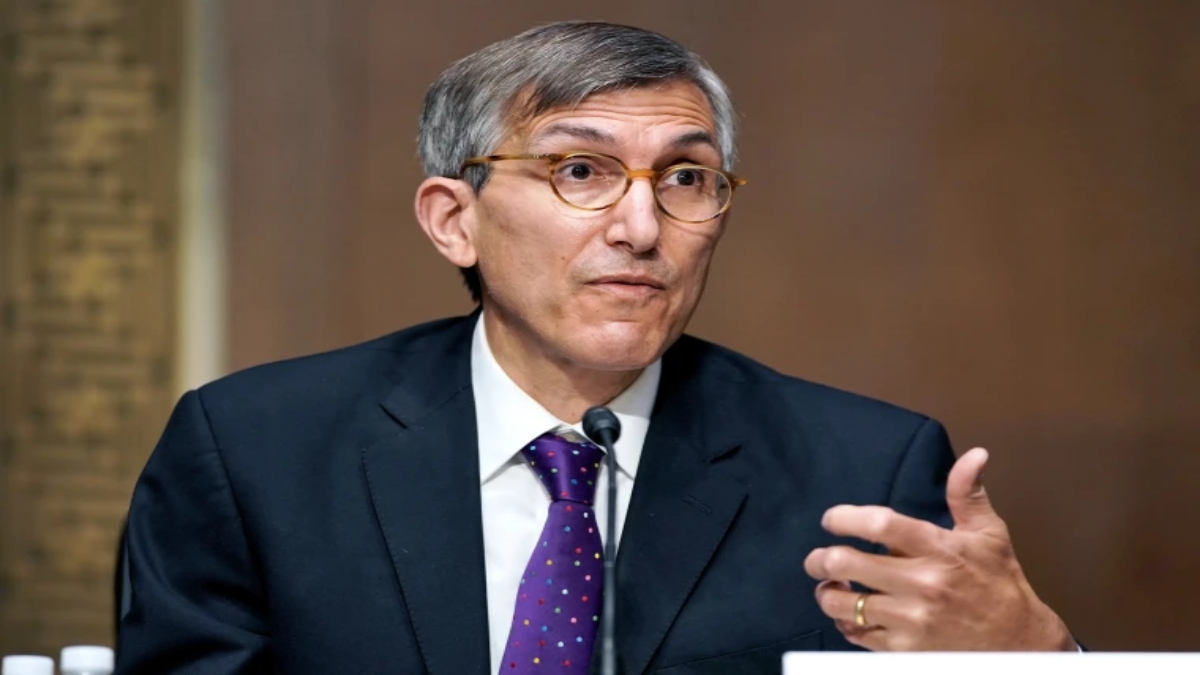)



